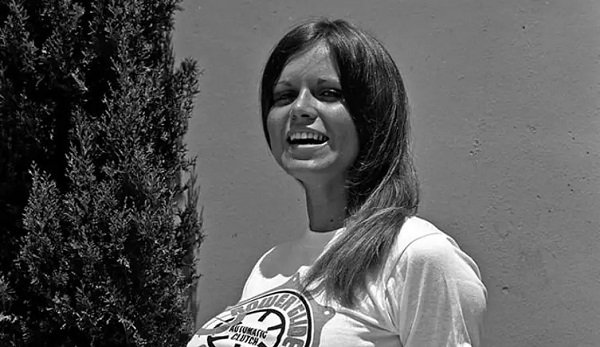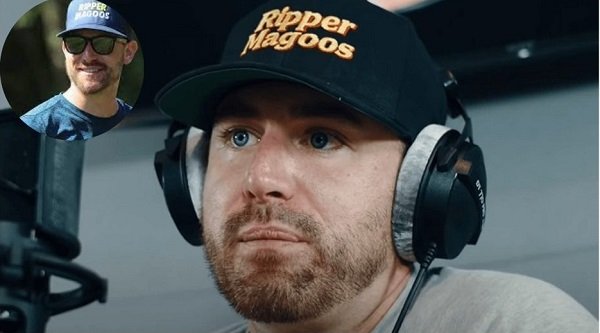Barbara Roufs, a name synonymous with beauty, charisma, and tragedy, left an indelible mark on the world of drag racing. Known for her vibrant presence at racing events in the 1970s, Barbara’s story is one of glamour, passion, and ultimately, a tragic end. As a renowned drag race trophy girl, she brought excitement and energy to fans and racers alike, earning her a beloved place in the racing community. However, her untimely suicide in January 1991 has left a shroud of mystery and ongoing fascination with her life and legacy. This article delves into the remarkable journey of Barbara Roufs, exploring her rise to fame, distinctive style, personal life, and the enduring impact she had on the sport and those who knew her.
Key Takeaways
- A Life of Glamour and Tragedy: Barbara Roufs’ life was a fascinating blend of glamour and tragedy. Her career as a drag race trophy girl brought her fame and adoration, but it also ended abruptly and tragically with her suicide in 1991. The circumstances surrounding her death remain a mystery, adding to the ongoing fascination with her story.
- A Trailblazer in Motorsports: Barbara Roufs broke new ground in the male-dominated world of motorsports. Her success as a drag race trophy girl inspired greater female participation and visibility in various roles within the sport. She set a precedent for future generations, demonstrating that women could excel and thrive in what was traditionally considered a man’s domain.
- The Power of Personal Connection: Barbara Roufs’ impact extended beyond her physical presence at racing events. She had a unique ability to connect with fans and racers on a personal level, creating a deep and lasting impression. Her magnetic personality and enthusiasm for the sport fostered a sense of community and engagement, leaving a lasting legacy in the hearts of those she touched.
- Mental Health Awareness: The tragic end to Barbara Roufs’ life underscores the importance of mental health awareness and support systems. Her story highlights the pressures and complexities that can accompany a life in the public eye, serving as a reminder to prioritize self-care and seek help when needed.
- A Multifaceted Legacy: Barbara Roufs’ legacy extends beyond her career achievements. She is remembered not only for her beauty and charm but also for her passion, enthusiasm, and the indelible mark she left on the drag racing community. Her story encourages us to celebrate the multifaceted lives of those who entertain and inspire us, recognizing their impact both on and off the track.
Early Life and Family Background
Barbara Roufs was born in 1944 in the heart of California, a state steeped in the thrilling culture of motorsports. Her upbringing was deeply influenced by her family’s strong connection to the racing community. Barbara’s father, Wayne Eldon Riley, was a motorcycle rider and racer at the Kearney Bowl, while her mother, Thelma Ruby Riley, owned a beauty salon and played the organ at the Church of the Nazarene, Calvary Bible. It was within this environment that Barbara’s fascination with drag racing began to take root.
Barbara grew up with three biological siblings: James, Bruce, and Vivian Deaton, as well as an adopted brother, Ben Gube. Her parents, especially Wayne and Thelma, played a pivotal role in fostering her early interest in motorsports and provided unwavering support for her pursuits.
The Rise of a Racing Icon
Barbara Roufs’ entry into the drag racing world was nothing short of spectacular. Her unique blend of beauty, charisma, and an undeniable passion for the sport set her apart. By the early 1970s, she had found her calling as a drag race trophy girl, a role that went beyond mere presentation. Barbara brought a sense of glamour and excitement to the races, captivating fans and participants alike with her vibrant personality.
Distinguishing Features and Style
What truly set Barbara apart from other trophy girls was her iconic style and mature presence. At 29, she was older than most of her peers, but this only added to her allure. Her long, straightened hair and signature 60s go-go boots became her trademarks, making her a standout figure on the drag strip. Barbara’s age, combined with her stunning looks, created an enigmatic allure that fans couldn’t help but gravitate towards.
Career Highlights and Influence
Barbara Roufs’ career as a drag race trophy girl was marked by notable achievements. One of her most memorable moments was being crowned the queen of the 6th annual US Professional Dragster Championship at the Orange County International Raceway. This prestigious title solidified her status as a key figure in the drag racing community. However, Barbara’s impact extended beyond her physical presence at these events. She embodied the spirit of the sport, engaging with fans and racers on a personal level and creating a magnetic connection that drew in crowds and media attention.
Her influence on the drag racing community was profound. Barbara helped elevate the profile of the sport, attracting more spectators and generating greater media interest. She inspired future generations of women in motorsports, demonstrating that drag racing was not just a man’s world. Barbara’s involvement paved the way for increased female participation, both on and off the track.
Personal Life and Tragedy
While Barbara’s public persona was larger than life, she kept her personal life closely guarded. She was married and had a daughter, Jet Dougherty, who later spoke fondly of her mother’s vibrant spirit and devotion to drag racing. Despite her fame, Barbara chose to keep her husband’s identity private. Her married life and the identity of her child’s father remain unknown.
In January 1991, tragedy struck. Barbara Roufs’ life came to a tragic end when she died by suicide at the age of 47. The circumstances surrounding her death remain unclear, leaving many questions unanswered. Her suicide shocked the racing community, as they mourned the loss of a beloved figure who had brought so much joy and excitement to the sport.
Lasting Impact and Influence
Barbara Roufs’ legacy extends far beyond her untimely death. She is remembered not only for her beauty and charm but also for the significant impact she had on the drag racing community. Barbara inspired countless individuals with her confidence, setting a standard for future generations of trophy girls and female participants. Her influence helped increase the visibility and participation of women in motorsports, breaking down barriers and paving the way for greater inclusion.
| Event Name | Location | Date | Description |
|---|---|---|---|
| Barbara Roufs Memorial Drag Race | Orange County International Raceway | April 15, 2023 | An annual race dedicated to her memory, featuring special tributes and showcases of her memorabilia |
| Legends of Drag Racing Tribute Night | Pomona Raceway | August 20, 2023 | A celebration of legendary figures in drag racing, including Barbara Roufs, through stories and remembrances |
Remembering Barbara Roufs
Today, Barbara Roufs is remembered as a trailblazer who left an indelible mark on the drag racing community. Her legacy continues to inspire and captivate new generations of enthusiasts. Tributes from fans and racers alike highlight her influence and the deep personal connection she forged with those around her. Social media platforms and racing forums echo with memories and photos, celebrating her contributions and vibrant personality.
Lessons from Her Story
Barbara Roufs’ life serves as a poignant reminder of the complexities behind the glamour of public life. It underscores the importance of mental health awareness and support systems for individuals in high-pressure roles. Her story also emphasizes the celebration of women in motorsports, recognizing their multifaceted lives and contributions to a traditionally male-dominated field.
Barbara Roufs’ Enduring Legacy
Barbara Roufs’ impact on the world of drag racing is still felt today. She set a precedent for future trophy girls, raising the bar for professionalism, style, and charisma. Her influence extends beyond the role, as she inspired greater female participation in various capacities within motorsports. Barbara’s legacy is evident in the increasing number of women involved as racers, mechanics, and organizers.
Memorials, Tributes, and Cultural Impact
The drag racing community has honored Barbara Roufs’ memory through various memorials and tributes. Annual memorial races and events celebrate her life and contributions, ensuring her spirit remains alive within the sport. Barbara’s legacy is particularly significant for women in motorsports, serving as a source of inspiration and encouragement to pursue their passions in a male-dominated field.
Her iconic style, featuring long hair and go-go boots, has also left an indelible mark on popular culture. Barbara’s images, widely shared online, continue to captivate new audiences, keeping her memory vibrant in the digital age. She has become an enduring symbol of an era, reflecting the glamorous side of motorsports.
Conclusion
Barbara Roufs’ story is one of passion, tragedy, and a life fully embraced. Her rise to fame in the drag racing world was marked by her unique charm and dedication, making her a beloved figure in the community. Despite the tragic end to her life, Barbara’s legacy endures through the countless lives she touched and the lasting impact she had on the sport. As we remember her, let us celebrate her contributions, her vibrant spirit, and the joy she brought to the world of drag racing. Her life serves as a powerful reminder to embrace our passions and cherish the profound effect we can have on those around us.
Frequently Asked Questions
Who was Barbara Roufs?
Barbara Roufs was a prominent drag race trophy girl in the 1970s, known for her stunning beauty, charisma, and vibrant personality. She became an iconic figure in the drag racing community, celebrated for her unique style and ability to connect with fans and racers.
What was Barbara Roufs’ impact on drag racing?
Barbara Roufs had a significant influence on the sport. She increased the visibility and participation of women in motorsports, setting a standard for future generations. Her presence brought glamour and excitement to the races, attracting more spectators and media interest.
How did Barbara Roufs die?
Barbara Roufs tragically died by suicide in January 1991. The circumstances surrounding her death remain unclear, but her passing left a profound impact on the racing community.
What is Barbara Roufs’ legacy today?
Barbara Roufs is remembered through memorial events, tributes from fans and racers, and her enduring influence on the sport. Her legacy continues to inspire new generations of drag racing enthusiasts, emphasizing the celebration of women in motorsports.
Who were Barbara Roufs’ family and siblings?
Barbara Roufs had three biological siblings: James, Bruce, and Vivian Deaton, and an adopted brother, Ben Gube. Her parents, Wayne Eldon and Thelma Ruby Riley, played a crucial role in fostering her early interest in motorsports. She was also a devoted mother to her daughter, Jet Dougherty.
What was Barbara Roufs’ impact on women in motorsports?
Barbara Roufs paved the way for greater inclusion and participation of women in motorsports. Her success and prominence demonstrated that women could achieve recognition and respect in a male-dominated field, inspiring countless individuals to pursue their passions.
Are there any famous quotes from Barbara Roufs?
One of her well-known quotes is: “Life is like a race; it’s not just about speed, but enjoying the journey and the people you meet along the way.” This reflects her philosophy of embracing life’s journey and valuing relationships over mere achievements.








No Comment! Be the first one.